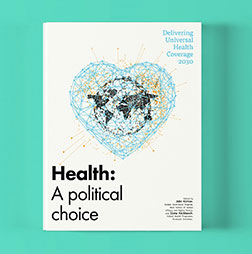G7 performance on trade
At the G7’s Kananaskis Summit, trade will soar back to the top of the agenda. All G7 economies depend on trade for economic growth, employment, innovation and low inflation. But they now face proliferating protectionism, sanctions, disrupted supply chains, uncertainty, costs and fears that a global recession or even depression could come. G7 action is urgently needed.
Deliberation
Trade has been a cornerstone of the G7’s work since its start in 1975. Until 2024, G7 leaders devoted 63,217 words of their communiqués to trade, averaging 1,264 words at each summit, for 15% of the total.
In 1975, their 445 words on trade (for 39% of the communiqué’s total) extolled the benefits of an open trading system, resisted protectionist pressures and sought substantial tariff cuts through accelerated multilateral trade negotiations. By 2003, their trade agenda included trade facilitation, trade to support sustainable development and the trade liberalisation of environmentally friendly products.
After 2009, and with the start of G20 summits, G7 attention to trade fell. But it returned since 2020 with the Covid-19 pandemic and its accompanying protectionist pressures. In 2023, 6,536 words on trade (31%) included fisheries subsidies, clean energy, clean technologies, enhancing global economic resilience and economic security through trade, and establishing resilient global supply chains. Leaders emphasised the negative impacts of economic coercion through trade that “infringes upon the international order centred on respect for sovereignty and the rule of law, and ultimately undermines global security and stability.”
The 2,919 words (30%) on trade in 2024 reinforced this new geo-economic focus.
Decisions
Since 1975, G7 leaders have made 487 trade commitments, for 8% of all G7 commitments. The most – 51 – occurred at the 2023 and 2024 summits, for 8% and 11% respectively, of the total commitments made there.
This was followed by 24 commitments in 2013 (11%), and 21 in both 1977 (38%) and 2021 (5%). Between 2013 and 2017, summits produced between 10 and 24 commitments (3%–11%) per summit. Subsequently, 2018, 2019 and 2020 slumped to five or fewer (5%–12%).
In 2021 they soared to 21 (5%), 18 (3%) in 2022 and up to the highest levels in 2023 and 2024.
Delivery
G7 members’ compliance with their leaders’ trade commitments average 69%, based on the G7 Research Group’s 54 assessments – well below G7’s overall average of 77%.
Compliance on trade was led by the European Union at 87%, followed by Canada at 80%, the United Kingdom 76%, Japan and Germany 75%, the United States 65%, Italy 60% and France with only 54%.
Compliance was low until the 2000 summit, which generated 100% compliance with commitments to launch World Trade Organization negotiations. It was mixed from 2004 to 2019, although compliance with a 2009 commitment to reverse declining foreign direct investment was 95% (despite low compliance overall for that summit) and a 2010 commitment to resist protectionist pressure was 89% (the same as the overall compliance for 2010).
Since then, compliance has been strong, with 100% for 2020’s commitments to address support for trade and investment, disruptions in supply chains, and international trade facilitation. The 2021 commitment to champion free trade within a reformed trading system had 88%, 2022’s to uphold competition rules 100% and 2023’s to enhance resilient supply chains 94%. By December 2024, compliance with the 2024 commitment on resilient supply chains was 94%.
Recommendations
To increase compliance with their trade commitments at Kananaskis, G7 leaders should make more trade commitments. The 10 highest-complying summits between 1975 and 2023 produced 148 trade commitments and averaged 94% compliance. In contrast, the 10 lowest-complying summits produced only 52 commitments and 43% compliance.
Second, those commitments should refer to the WTO and its associated ministerial meetings and conferences, negotiations and agendas. Such commitments averaged 85% compliance, compared to 70% for those that did not make such references.
Third, G7 leaders should hold a trade ministers’ meeting this year. Since 2020, with compliance on trade consistently high, there have been two such meetings each year from 2021 to 2024.
Fourth, they should make commitments that allow for flexibility in implementation.
Finally, they should consider how to improve the traditionally low compliance on commitments that are geographically targeted (for example on the least developed countries or Africa), on new ‘trade’ issues (environmental goods and services), sensitive sectors (such as agriculture) and domestic measures (such as subsidies).
Conclusion
Given current geopolitical activity, instability and uncertainty, trade will be among the most critical discussions at Kananaskis. The Trump administration’s campaign to secure trade-related and non-trade related concessions has heightened trade tensions and will have significant negative impacts on G7 economies and international trade flows.
Building on the 2024 Apulia Summit, continued and greater emphasis could be placed on securing global supply chains, accompanied by renewed commitments to strengthen the rules-based multilateral trading system, with the World Trade Organization at the core.












